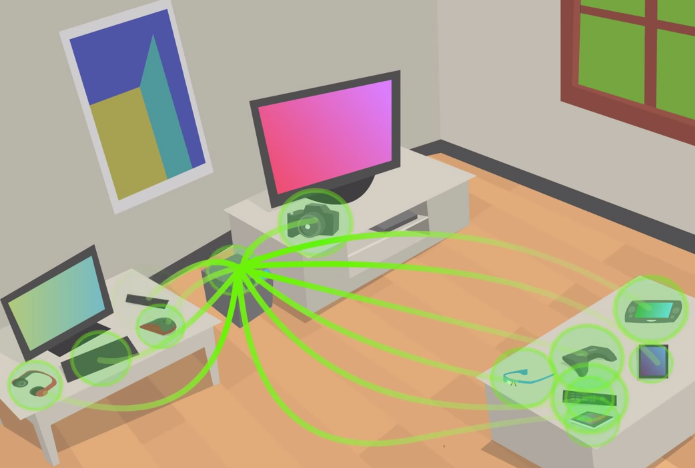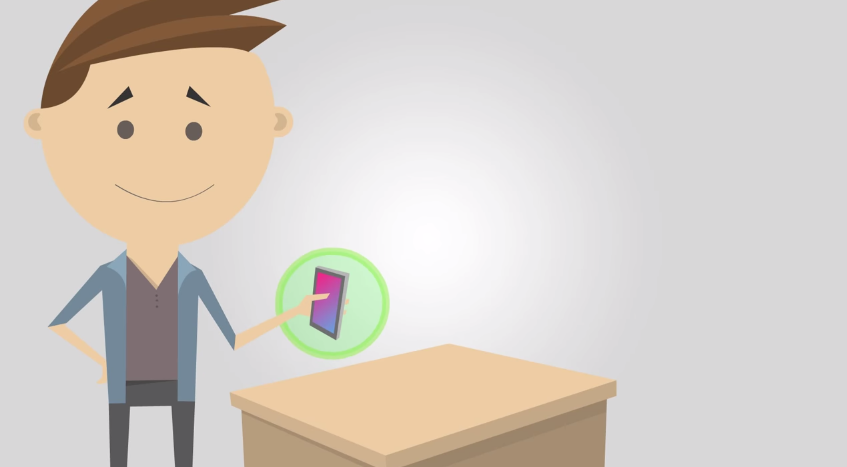Ossia's 'Cota' Technology Promises Wireless Charging Up To 30 Feet Via Wi-Fi Or Bluetooth
A company called Ossia that focuses on wireless charging announced today a new breakthrough technology called "Cota." The system can charge devices remotely up to 30 feet by using Wi-Fi and Bluetooth antennas as receivers. This would save OEMs and ODMs money as they don't have to integrate any new antennas into their devices to receive the power wirelessly.
According to Ossia, all that's needed to integrate this new technology are slight modifications to circuitry and the device's firmware.
“From the first concepts, we believed Cota should use existing network antenna components to receive power," said Hatem Zeine, CEO of Ossia and inventor of the Cota wireless power solution. “One of the biggest struggles device designers have is the internal 'real estate' that limits what can be placed, not only inside smartphones and tablets, but also more compact wearable devices, all of which are increasingly thinner and lighter weight. Not only does Cota not take up any of this valuable space by requiring additional components, but by adding remote wireless power, designers can actually decrease the size of the biggest space hog inside the device: the battery. When the device receives power remotely it can be continuously charged, making it possible to use smaller batteries in designs."
Because Cota has a range of 30 feet, it can charge all devices situated in a typical home or office room simultaneously. The system needs a charger and a receiver (inside the devices) to work. The receiver sends omnidirectional beacon signals to find the Cota charger. Once the charger is found, it returns "thousands of targeted signals that build pockets of energy at only the precise locations of the beacons' origins," according to Ossia.
This sort of precise targeting means that the system is not only highly efficient, but Ossia said that it's also inherently safe. The tracking beacons use only 1/10,000th of a Wi-Fi signal's power, which is itself already quite a low-power signal. The physical properties of the Cota technology naturally avoid anything that absorbs energy, such as people, pets and even plants.
Just as companies started to integrate the existing three best-known wireless charging technologies into their devices, it seems yet another one has appeared. The good news is that this Cota technology doesn't seem to need major changes to devices to work. Ossia will also make the technology available in dongles and smartphone sleeves until it can convince OEMs to see the benefits and, ideally, incorporate it directly into devices.
Being a wireless technology that has to charge devices at a significant distance, Cota will still be less efficient than simply plugging your smartphone into a wall outlet. The technology works at around 30 percent efficiency of a dedicated charger; Ossia said that a charging pad can push about 50 percent the efficiency of an outlet. The disadvantage for both dedicated chargers and charging pads is that they consume power continuously, even after they've charged the devices. The Cota chargers, on the other hand, go into hibernation when the devices are charged, and thus then they consume much less energy.
Get Tom's Hardware's best news and in-depth reviews, straight to your inbox.
The Cota charger can deliver up to 1W of power safely, but more power could be delivered to devices that aren't worn on the body, such as speakers, routers, and so on. Ossia said that for a 24-hour period, the average usable energy is about 72 Wh. The company also said that there will be two types of chargers initially: one with a 6-8 foot range for small rooms, and one that can power multiple devices through walls or other obstacles at a range of 10 feet.
Ossia's vision for wireless charging seems to be that you shouldn't even need to think about charging your devices. The energy should flow, safely, everywhere. Our mobile devices should be virtually always charged, and we should never run out of power.
Whether Cota is the actual technology to achieve this wireless charging panacea remains to be seen. However, this has always been the dream with wireless charging -- a world where smartphones, notebooks and even (electric) cars could be constantly charging, drawing energy from all the solar panels (or other renewable sources) around us.
Ossia is now working to miniaturize the technology into a chip that can be more easily implemented by OEMs, and it hopes that we will see devices with Cota wireless charging sometime next year.
Follow us @tomshardware, on Facebook and on Google+.
Lucian Armasu is a Contributing Writer for Tom's Hardware US. He covers software news and the issues surrounding privacy and security.
-
Pierre Olivier Vidal Looks like a great technology and I'm looking foward to it, but I have some concerns.Reply
- Can it damage other electronics like a tv or a computer?
- Will it shorten the battery life of my phone? ( specially important for integrated battery phones )
- What price range are we talking about? -
PaulBags I was just thinking the other day 'wireless charging is pointless unless I can move around'. If I have to leave my phone in one place, why not plug it in and charge it faster?Reply
My 2m charging cable let's me sit on the couch while charging at full speed, I can duel screen & use my phone as a remote. At 30% efficency my phone would complain about the power draw with the screen on and tell me I need to stop using it if I want it to charge, so until they get that efficency up it is, to me, a waste of money.
And DECREASING battery size? NOPE! Manufactuors: DON'T LISTEN! -
Shawn Dream Whoever wrote this article needs to do better independent research. Both modern wall wart chargers and Qi standard charging pads do NOT continue to waste power when the device is charged. And this is easy to test simply by feeling the charger. If it's cool, it's not wasting much energy.Reply
http://www.reddit.com/r/Frugal/comments/19pyin/dont_bother_unplugging_unused_chargers_to_save/ -
tntom So 72Wh / 24hr = 3Wh an hour which would charge a Galaxy Note 4 in 3.5hrs? Or is that 72Wh before you subtract the 30% efficiency? Which would mean charging a Note 4 in 10.5hrs from dead or 5hrs from a half charged state.Reply
If it could charge my wireless headphones then that would be all I care about.

